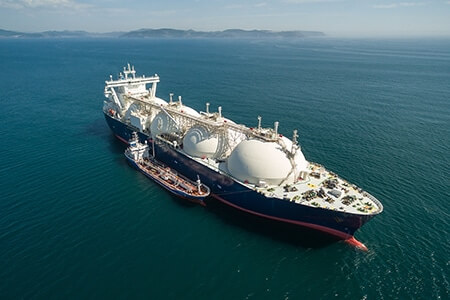
LNG Industry Seasonal Swings Swept Off as Supply Surged
LNG Industry won’t enjoy its customary winter boost in Asia this year. Also, the seasonal swings in prices may be a thing of the past as new supply, and a steadier China demands profile volatility.
The forward curve for LNG futures is not quite as flat as a pancake. It indeed suggests that the northern winter price spike seen in seven of the last northern winters will be absent this year.
Chicago Mercantile Exchange contracts show how a winter price peak of $7.02 per million British thermal units (mmBtu) for February cargoes. The data is according to the Asian benchmark spot price, the Japan/Korea Marker compiled by S&P Global Platts.
This correlates to $5.71 per mmBtu for the month of November contract, $6.45 for December, and $6.98 for January.
Moreover, prices moderate again after the February peak implied by the futures. With March contract at $6.70 per mmBtu, April at $6.12 and May at $5.99.
Asian spot prices LNG-AS surged during the colder period. It is also, the modest uptick in expected prices for the northern winter stands in contrast to prior years.
As an example, in the winter of 2017/18, the spot price more than doubled from a low of $5.40 per mmBtu in June 2017. It peaked at $11.50 on January 2018.
However, the increasing supply from new LNG trains in Australia and the U.S. started to alter that dynamic in 2018/19. The spot price peaked in June that year amid summer power demand. Also, with a minor lift ahead of winter and a seasonal peak in November.
The U.S. has been ramping up output. Three new plants starting this year and some to start operations soon.
LNG Industry: China’s Structural Shift
LNG industry growth in China is both a slowing and smoothing growth. In 2018, it overtook South Korea as the second-biggest importer of the super-chilled fuel, behind Japan.
According to vessel-tracking and port data, China imported 42.9 million tonnes of LNG in the first nine months of the year.
Furthermore, China will import a total of about 57.2 million tonnes for 2019, if maintained for the rest of the year.
The imports will be a modest 6.3% gain on the 53.8 million tonnes imported for the whole of 2018. Contrarily, there is a possibility that imports of fuel will increase in the last quarter to meet winter demand.
However, even with a strong fourth quarter, it seems China’s LNG demand growth will be considerably lower in 2019. Also, in 2017, it jumped 48% on the year, and in 2018, it increased by 41%.
Moreover, it is worth noting that LNG imports were stable in the November to January period in 2018/19.
The question for the LNG market is if China will experience a surge in demand in winter months. Also, if the relatively stable monthly volumes of imports since the January peak will continue over the coming winter.
Certainly, it appears that Beijing’s campaign for better air quality will continue this winter. Also, further coal-to-natural gas switching in residential heating and industry is likely.
On the contrary, it also appears China is managing its natural gas supply and demand better. It is with new storage available to smooth out seasonality, as well as increased domestic output.




